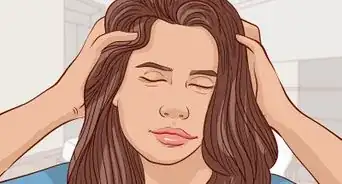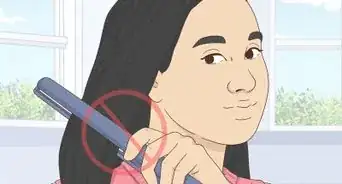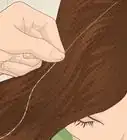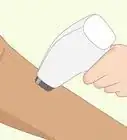This article was written by Courtney Foster and by wikiHow staff writer, Aly Rusciano. Courtney Foster is a Licensed Cosmetologist, Certified Hair Loss Practitioner, and Cosmetology Educator based out of New York City. Courtney runs Courtney Foster Beauty, LLC and her work has been featured on The Wendy Williams Show, Good Morning America, The Today Show, The Late Show with David Letterman, and in East/West Magazine. She received her Cosmetology License from the State of New York after training at the Empire Beauty School - Manhattan.
wikiHow marks an article as reader-approved once it receives enough positive feedback. In this case, 90% of readers who voted found the article helpful, earning it our reader-approved status.
This article has been viewed 461,266 times.
So, you’ve decided it’s time to start taking better care of your hair. Maybe you want your locks to grow faster, be shinier, or look less damaged after years of coloring. No matter what brought you to this article, we’ve got your back! Creating a hair care routine can help your hair look its absolute best and leave you feeling even more confident, and all it takes is a bit of direction and the right products.
This article is based on an interview with our licensed cosmetologist, certified hair loss practitioner, and cosmetology educator, Courtney Foster. Check out the full interview here.
Things You Should Know
- Determine your hair type so you can create a routine that fits your hair care needs.
- Use a moisturizing shampoo with argan oil if you have dry hair, or opt for a clarifying shampoo if you have oily hair.
- Deep condition your hair at least once a week to help repair damage and keep it healthy.
Steps
Maintaining Healthy Hair
-
1Discover your hair type by avoiding hair products for a few days. Everyone’s hair is different and needs to be taken care of in different ways. Learning what type of hair you have can help you create the perfect hair care routine. Go a few days without using products and observe what your natural hair does.
- Your hair may be:
- Oily
- Dry
- Normal
- Wavy
- Straight
- Curly
- Coily
- Thick
- Fine
- Always treat your hair according to its hair type. Your hair will likely react differently than a friend's to certain products and care.
- Your hair may be:
-
2Wash your hair when necessary. You may think you need to wash your hair daily, but most hair types only need a wash every other day or a few times a week. Depending on your hair type, wash it when it's dirty, not just out of habit. In general, people with fine, straight hair need to wash more often than people with thick, curly, or wavy hair.[1]
- If you have dry hair, wash it every third day.
- If your hair is more oily, try washing it every other day; if it looks really oily after just 1 day, wash it every day.
- If you have normal hair (not super dry and not super oily), wash it every other day or every 3 days.
- There’s no perfect formula for how much you should wash your hair. Monitor your hair and wash it when you feel it's dirty.
- Try using dry shampoo between washes to help soak up excess oil.
Advertisement -
3Use lukewarm water to wash your hair. Do your best to avoid washing your hair with hot water. Hot water can strip your hair of protective oils that serve as a natural conditioner. So, lock in that shine by washing your hair with lukewarm water.
-
4Brush your hair with a comb when it’s wet. After you get out of the shower, it can be tempting to run a brush through your hair; however, a wide-tooth comb is the best way to remove any knots post-showering. A brush often snags and pulls your hair, causing it to break and become damaged, so use a comb and start at the bottom of your hair, working your way up. [2]
-
5Let your hair air dry rather than using a blow dryer. Blow dryers are a fast way to dry your hair, but the heat from the dryer can damage hair follicles and lead to dry, damaged hair. Allow your hair to air dry when possible, but if you need to use a blow dryer, stick to one that has a cool setting.[3]
-
6Trim your hair regularly to keep it healthy. Hair is prone to split ends, and if you go long periods of time without cutting your hair, it can look damaged and unhealthy. Try to give your hair a trim every 6 months or so, and if you’re really prone to split ends, trim your hair every 6 weeks.[4]
- If visiting a salon frequently is too much trouble or too expensive, trim your hair yourself. Invest in hair-cutting scissors and use a mirror to see the back of your head.
- It's easiest to trim your hair when it's wet or straight so you can get even ends.
- If your hair is curly, it’s best to trim it when it’s dry or only slightly wet. Curly hair looks much longer when it’s wet, so it may dry shorter than you expected.
-
7Do your best not to touch your hair. Because your hair and hands already have natural oils, constantly touching or moving it out of your face can make your hair look greasy. To avoid this, the best option is to get a manageable haircut that won't bother you throughout the day.
Protecting Your Hair
-
1Try to dye your hair as little as possible. Hair dye has many chemicals that can damage your hair, and if done too often, it can be hard to repair the damage. If you’re willing, stick to your natural hair color, but if you must dye, do it infrequently and stay within 3 shades of your natural color.
-
2Protect your hair from the sun. The sun can damage your hair just like it damages your skin. Too much sun can dry out your hair, especially if your hair is color treated, so whenever you’re outside for long periods of time, try covering your hair with a hat or using a hairspray with SPF protection.
-
3Keep your hair in loose updos. Throwing your hair back in a ponytail or braid is convenient but be careful not to pull your hair too tight, as this can cause damage and breakage. It's okay to do tighter styles with your hair, but avoid doing them every day and let your hair stay loose and natural at night.[5]
-
4Apply natural remedies to your hair. There are a lot of different hair products you can buy to improve the quality of your hair, but some of the best things for your hair are natural ingredients that can be found in the kitchen. Take a look at these natural moisturizers:
- Olive oil: Warm olive oil helps moisturize dry hair. Apply it to your hair and let it sit for 45 minutes, then shampoo and rinse.
- Tea: Unsweetened, brewed tea can bring shine to your hair and enhance your natural color. Rinse your hair with a tea that corresponds to your natural color (black tea for brunettes, chamomile tea for blondes) after rinsing out shampoo in a shower.
- Coconut oil: This serves as a natural conditioner. Take heated coconut oil and apply it to your hair, letting it sit for 30 minutes, then rinse with shampoo.
- Honey: This natural moisturizer can help strengthen hair follicles. Mix equal parts honey and shampoo and rinse.[6]
-
5Eat healthy to keep your hair strong and encourage growth. In order to have healthy hair, you need to have a healthy body, which means eating right. Because hair is another part of your body, it needs certain nutrients to maintain strength and growth. Add more foods with these nutrients to your diet to encourage hair growth:
- Essential fatty acids: Flaxseed oil, salmon, tuna, walnuts, and almonds
- Vitamin B6: Bananas, potatoes, and spinach
- Protein: Fish, chicken, eggs, and soy products
- Folic acid: Fresh fruits and vegetables, especially citrus fruits and tomatoes, as well as whole grains, beans, and lentils
- Talk to your doctor about taking over-the-counter supplements, like MSM (methylsulfonylmethane), to help strengthen and grow hair.[7]
Picking Hair Care Products
-
1Choose a shampoo that matches your hair type. There’s a wide variety of shampoos out there for all hair types in a range of prices. While you should avoid really cheap shampoos, salon shampoos may not provide extra benefits for your hair. Focus more on picking a shampoo for your hair type rather than the price.
- Check the label and ingredients of the shampoo before buying it. See if it’s marketed for your hair type and includes ingredients that’ll benefit your hair.
- For instance, if you have dry hair, look for a shampoo with moisturizing and hydrating ingredients like argan oil; if you have greasy hair, opt for a clarifying shampoo.
-
2Condition your hair after every shampoo. Conditioning is important because it moisturizes your hair, prevents damage, and helps restore natural oils.[8] Avoid applying conditioner to your roots as this can create extra oily hair.
- Choose a conditioner that is also right for your hair type. If you have dry hair, you may need a hydrating conditioner; if you have oily hair, you might like a light-weight conditioner.
-
3Apply a heat protectant before using styling tools. You may not be able to avoid using styling tools forever, but you can keep your hair as healthy as possible when applying heat. Before blow drying, curling, or straightening your hair, always apply a heat serum or heat spray.
-
4Use a deep conditioner once a week. Along with your regular conditioner, it can be good to apply a deep conditioner at least once a week to repair damage. Some popular hair masks are made by Neutrogena, Alterna Ten, Aussie, and Fekkai.
-
5Give your hair extra body with a volumizer spray. Volumizers are great because they help you achieve a thick-bodied look even if your hair is fine. Flip your hair over and spray a few spritzes onto your roots and the rest of your hair. Then, create volume by blow drying or scrunching your hair with your hands.
-
6Replace regular shampoo with dry shampoo. Try your best not to wash your hair too much, as washing it too often could strip it of its natural oils. If your hair looks greasy in-between washes, use a dry shampoo to freshen it up. Spray the dry shampoo on your roots, rub it in with your fingers, and then brush it out.
- Dry shampoos are great because they absorb oils without water or soap, keeping your hair’s natural oils intact.
Expert Q&A
Did you know you can get premium answers for this article?
Unlock premium answers by supporting wikiHow
-
QuestionDo you put heat protectant on wet or dry hair?
 Courtney FosterCourtney Foster is a Licensed Cosmetologist, Certified Hair Loss Practitioner, and Cosmetology Educator based out of New York City. Courtney runs Courtney Foster Beauty, LLC and her work has been featured on The Wendy Williams Show, Good Morning America, The Today Show, The Late Show with David Letterman, and in East/West Magazine. She received her Cosmetology License from the State of New York after training at the Empire Beauty School - Manhattan.
Courtney FosterCourtney Foster is a Licensed Cosmetologist, Certified Hair Loss Practitioner, and Cosmetology Educator based out of New York City. Courtney runs Courtney Foster Beauty, LLC and her work has been featured on The Wendy Williams Show, Good Morning America, The Today Show, The Late Show with David Letterman, and in East/West Magazine. She received her Cosmetology License from the State of New York after training at the Empire Beauty School - Manhattan.
Licensed Cosmetologist
-
QuestionWhat is the best hair routine?
 Courtney FosterCourtney Foster is a Licensed Cosmetologist, Certified Hair Loss Practitioner, and Cosmetology Educator based out of New York City. Courtney runs Courtney Foster Beauty, LLC and her work has been featured on The Wendy Williams Show, Good Morning America, The Today Show, The Late Show with David Letterman, and in East/West Magazine. She received her Cosmetology License from the State of New York after training at the Empire Beauty School - Manhattan.
Courtney FosterCourtney Foster is a Licensed Cosmetologist, Certified Hair Loss Practitioner, and Cosmetology Educator based out of New York City. Courtney runs Courtney Foster Beauty, LLC and her work has been featured on The Wendy Williams Show, Good Morning America, The Today Show, The Late Show with David Letterman, and in East/West Magazine. She received her Cosmetology License from the State of New York after training at the Empire Beauty School - Manhattan.
Licensed Cosmetologist Take your hair down out of whatever style it's in and detangle it. This helps prevent breakage when you're washing your hair. Then, shampoo with products formulated for your hair type. Clarifying shampoos work for most hair types, especially if you don't wash your hair every day. You can also use a clarifying shampoo if you have a lot of product buildup or dandruff. However, if your hair is dry, follow the clarifying shampoo with a moisturizing shampoo. Finish by conditioning and rinsing your hair. Use a deep conditioner instead of regular conditioner if your hair needs extra moisture. Opt for a product that's heavily emollient, like a mask or treatment with shea butter, honey, or avocado base. For added hydration, allow the deep conditioner to soak in for 10-15 minutes under a steamer or 15-20 minutes under a dryer, then rinse it out.
Take your hair down out of whatever style it's in and detangle it. This helps prevent breakage when you're washing your hair. Then, shampoo with products formulated for your hair type. Clarifying shampoos work for most hair types, especially if you don't wash your hair every day. You can also use a clarifying shampoo if you have a lot of product buildup or dandruff. However, if your hair is dry, follow the clarifying shampoo with a moisturizing shampoo. Finish by conditioning and rinsing your hair. Use a deep conditioner instead of regular conditioner if your hair needs extra moisture. Opt for a product that's heavily emollient, like a mask or treatment with shea butter, honey, or avocado base. For added hydration, allow the deep conditioner to soak in for 10-15 minutes under a steamer or 15-20 minutes under a dryer, then rinse it out. -
QuestionHow many times should I wash my hair in a week?
 Courtney FosterCourtney Foster is a Licensed Cosmetologist, Certified Hair Loss Practitioner, and Cosmetology Educator based out of New York City. Courtney runs Courtney Foster Beauty, LLC and her work has been featured on The Wendy Williams Show, Good Morning America, The Today Show, The Late Show with David Letterman, and in East/West Magazine. She received her Cosmetology License from the State of New York after training at the Empire Beauty School - Manhattan.
Courtney FosterCourtney Foster is a Licensed Cosmetologist, Certified Hair Loss Practitioner, and Cosmetology Educator based out of New York City. Courtney runs Courtney Foster Beauty, LLC and her work has been featured on The Wendy Williams Show, Good Morning America, The Today Show, The Late Show with David Letterman, and in East/West Magazine. She received her Cosmetology License from the State of New York after training at the Empire Beauty School - Manhattan.
Licensed Cosmetologist
References
- ↑ https://health.clevelandclinic.org/the-dirty-truth-about-washing-your-hair/
- ↑ https://www.aad.org/public/everyday-care/hair-scalp-care/hair/habits-that-damage-hair
- ↑ https://www.aad.org/public/everyday-care/hair-scalp-care/hair/habits-that-damage-hair
- ↑ https://www.goodhousekeeping.com/beauty/hair/a33448/haircuts-how-often-trim-hair/
- ↑ https://www.aad.org/public/everyday-care/hair-scalp-care/hair/habits-that-damage-hair
- ↑ http://www.womenshealthmag.com/beauty/beauty-uses-for-honey
- ↑ https://www.naturalmedicinejournal.com/journal/2019-11/beneficial-effects-sulfur-containing-supplement-hair-and-nail-condition
- ↑ https://www.aad.org/public/everyday-care/hair-scalp-care/hair/habits-that-damage-hair
- ↑ http://www.elle.com/beauty/hair/tips/g8062/healthy-hair-care-tips/?slide=5
About This Article
Before you start a hair care routine, find out what hair type you have so you can use the best products and techniques for it. If you don’t know your hair type, try washing your hair every other day to protect your hair’s natural oils. Only wash it more if it seems oily. When you do wash you hair, use lukewarm water and let your hair air dry to prevent heat damage. Then, try to keep your hair trimmed to prevent split ends. To learn how to prevent damage during the day and how to incorporate products, keep reading!

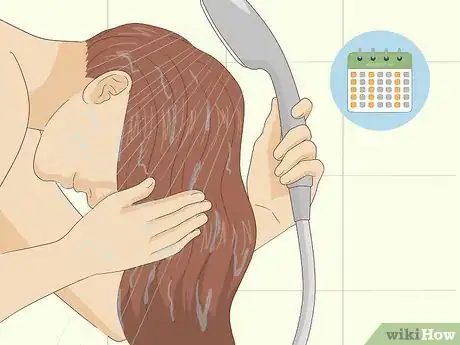
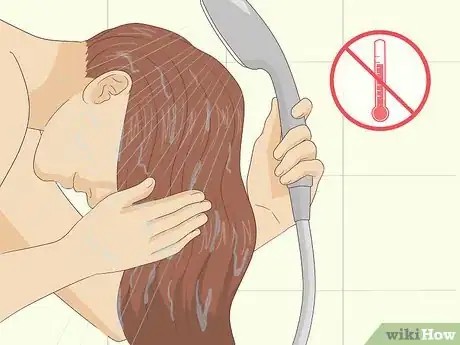

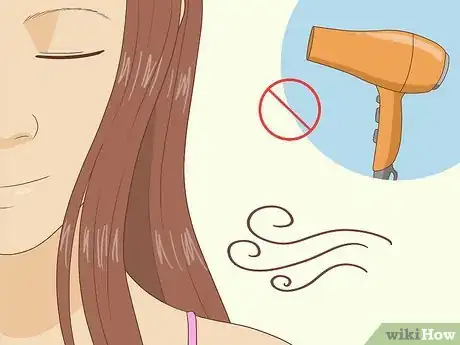
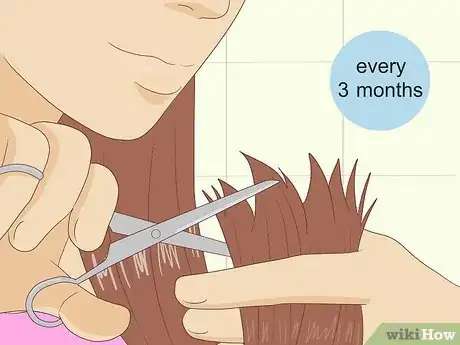
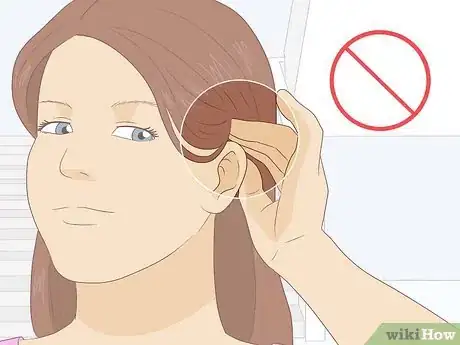
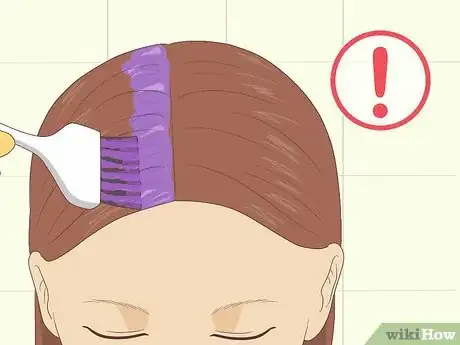
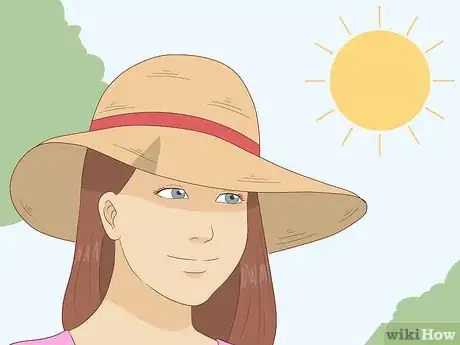
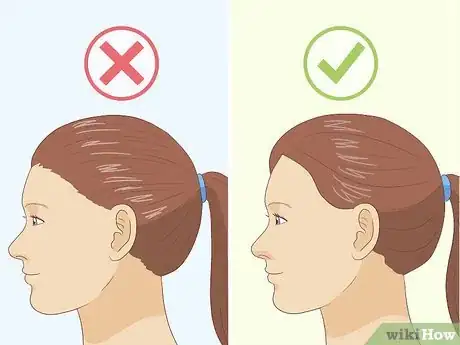

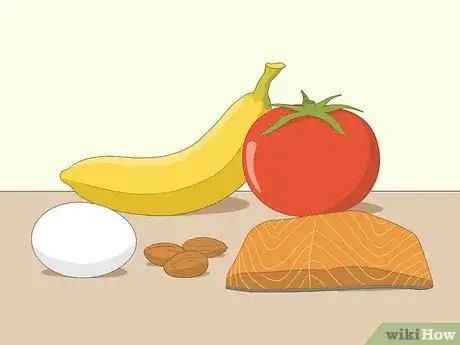
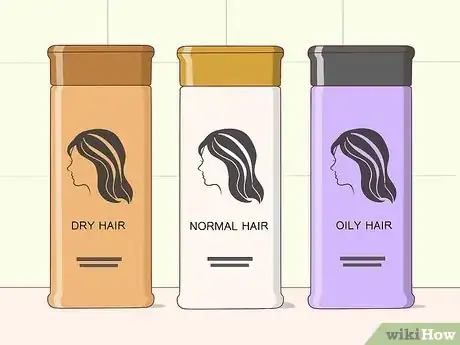

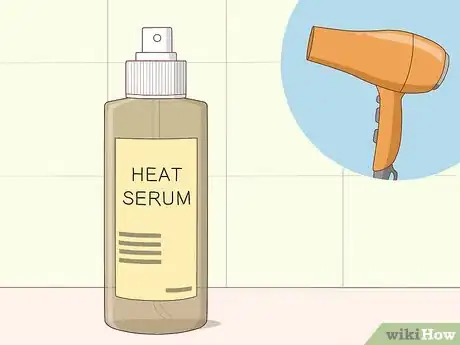
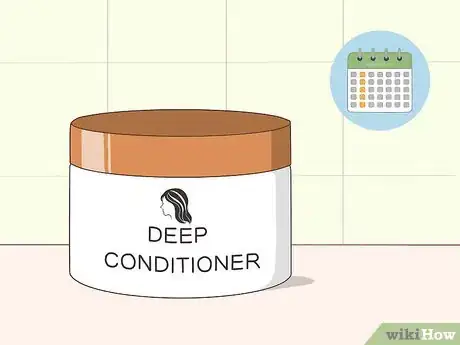
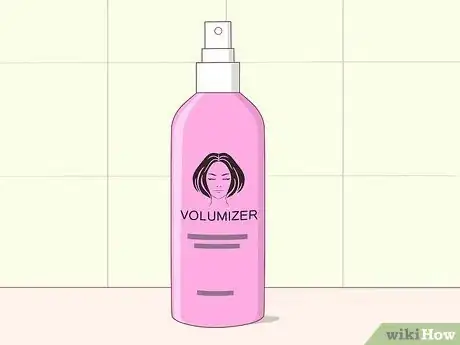
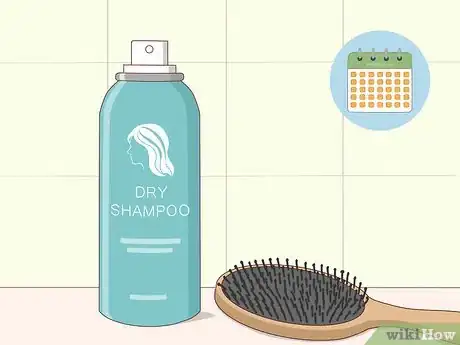

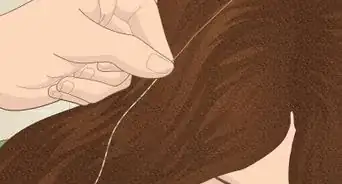


-Step-1-Version-8.webp)
